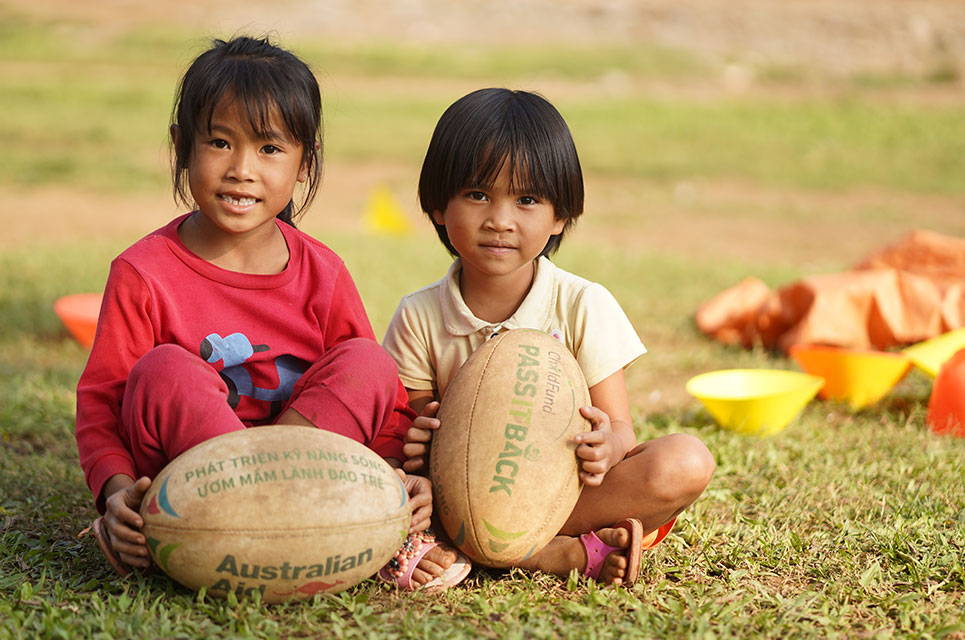Your basket is currently empty.
There is significant research available today which points to the important and positive impact that sport and physical activities can have on educational outcomes.
This includes encouraging better academic performance, ensuring greater inclusivity and participation in the classroom, as well as improvements to student health and preparedness for the future.
It is important to recognise, however, that not all sport automatically delivers wider gains.
In order to deliver on educational outcomes, sport and physical activities need to be intentionally designed and effectively implemented.

Studies show that routine participation in sport and physical activities can result in students having higher levels of attentiveness in class.
Academic performance
There is a common perception that devoting curriculum time to sport and physical activity will negatively impact students’ academic performance; taking away time from ‘important’ subjects.
However, research demonstrates that participation in sport and physical activity, both inside and outside the classroom, positively impacts students’ academic performance and efficiency.
Learning
- Integrating sport and physical activity into the routines of young people has demonstrated effectiveness in increasing students’ ability to learn and apply new skills and knowledge.
- Research shows that participation in light to moderate physical activity – especially in the morning – can significantly and positively impact a student’s ability to access knowledge and experience, and apply organisational, inhibitory and memory skills.
Attention and concentration
- Routine participation in sport and physical activity has a positive relationship with higher levels of attentiveness in classrooms.
- High levels of attentiveness positively impact academic performance by increasing a student’s ability to concentrate on, absorb and recall content and subject materials.
Cognition and brain function
- Frequent participation in sport and physical activity at a young age encourages positive cognitive development in youth – developing and learning to use the core skills of the brain to think, read, learn, remember, reason and problem solve.
- Sport and physical activity positively impacts academic performance as it encourages the enhancement of brain function and cognition through increasing blood flow to the brain; increasing levels of norepinephrine and endorphins; and increasing growth factors that help create new nerve cells and support synaptic plasticity.
Inclusivity and participation in the classroom
Participating in sport and physical activity provides students with new opportunities to interact and engage with one another – promoting strong friendships and helping to make the classroom a positive space for learning.
Students who participate in curricular and extra-curricular physical activities have also shown a higher commitment to school and an increased desire and ability to participate in school life;
Team-based sports can be particularly beneficial in overcoming divides as they instil a shared sense of identity, fellowship and purpose between participants.
In addition, the appeal of sport and inclusive and participatory nature can be leveraged as a strong access point to encourage the participation of marginalised students and foster inclusive practices.
Intentionally designed sport programs in schools with clear development outcomes can also be used to promote learning in a range of areas, including gender.
Sport and physical activity in schools can produce gender diverse role models that empower young women and girls who continue to be under-represented in school sports and physical education.
Physical health
Adopting frequent physical activity into the routines of children is associated with decreased cardiovascular risk in adolescence through adulthood.
Participation in physical activity also has a positive correlation with lower drug and alcohol use in schools.
Mental health
Research shows that students who participate in sport and physical activity have favourable mental health compared to inactive students.
Sport and physical activity can impact mental health by fostering feelings of safety, connection and purpose – ultimately leading to better mood states.
Integrating sport in education can also help to reduce levels of anxiety, stress and depression. Physically active students commonly have higher levels of confidence, self-esteem and self-worth.
Preparedness for the future
Sport and physical activity in schools can enable students to develop the skills, knowledge and networks not only to succeed in the classroom, but at home, in the community and in their careers.
Through skills development and increased confidence, active students are more likely to have the desire and capabilities to pursue higher education.
Sport and physical activities allows students to learn skills and internalise values which are attractive to employers, with studies showing that they are also more likely to secure high-quality employment as a result.
Studies also show that students who participate in extra-curricular sports are more likely to be active participants in their communities and engage with social and charitable issues.

